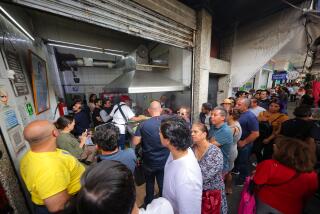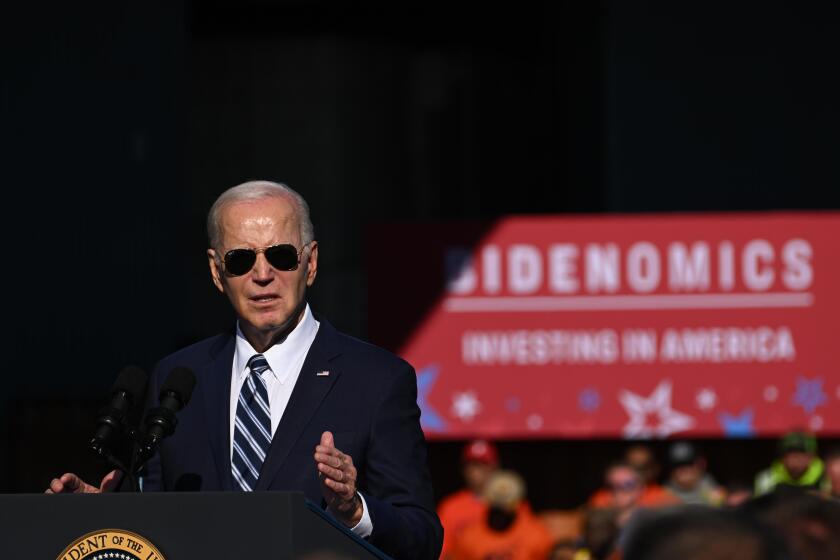Peru Ready to Try Private Enterprise to Revive Fishing
Fifteen years ago, Peru was the world’s largest fish meal producer. Then the government decided that it knew best. These days, in Peru’s discouraged coastal towns, “Gone Fishing” is a refrain seldom heard.
Until the early 1970s, Peruvian boats embarked on 1,500 sailings annually in search of catches that provided vital export earnings, crucial protein for a hungry populace and jobs in seaside towns.
In 1988, sailings are down to about 350. The fishing fleet has all but sunk since the military government of the day nationalized much of the industry in 1972.
Seventeen of Peru’s government-owned fish meal plants also are closed, and the 16 functioning meal factories, many of them still privately owned, are working at half capacity at a time world prices for the animal feed have doubled, thanks in part to the drought in North America.
Seen as Test
In this fish tale lies one example of Peru’s many woes, and those of other Latin American governments that have taken upon themselves the business of doing business. At the same time, the fishing industry illustrates the fragile hopes of Peru as it struggles, like its neighbor nations, to reverse years of economic decline and mismanagement by shifting emphasis to private enterprise.
President Alan Garcia has abandoned the prideful nationalist fishing policies of his and previous administrations and is courting foreign money and private Peruvian capital to revive an industry with vast potential. An array of vested interests conspire against him.
Revitalizing the fishing industry is seen as a test of Garcia’s ability to achieve the structural changes needed to bring Peru out of its gravest economic crisis.
In September, the government resolved to seek private investment for fishing, acknowledging that the state is broke and cannot do so itself. A key element is the plan to lease, not sell, the derelict fish meal plants to investors, who would rehabilitate the factories and also put up the money for fishing boats to provide the catches.
Predictably, the fisheries trade union opposed the plan, since private managers would no doubt be less lenient employers. Opposition emerged in the private sector, too, from the few private firms that now have fishing contracts.
Moreover, legislators from Garcia’s own ruling party censured the plan, saying that fish meal production should remain a state enterprise despite the state’s admittedly poor performance. Some said it appeared that Peru was going to sell off its sovereignty.
Fisheries Minister Romulo Leon gamely ignored the legislators’ nonbinding resolution and is moving ahead with attempts to attract local and foreign investment. But the approval of the motion brought groans from those seeking signs that Peru’s leaders are facing the realities that surround them.
Fighting ‘Big Fish’
Genaro Delgado Parker, an entrepreneur, had sought to lease a closed fish meal plant at Atico, north of Lima, and invest $1.3 million to renovate it, to the delight of the Atico residents who were clamoring for a return to operation. He also had plans to arrange West German investment for a new fleet of boats based at Atico to provide fish for the plant, which was shut down six years ago.
When opposition surfaced, Delgado Parker withdrew his offer. He noted in a letter to Leon that Atico’s people were the real victims:
“These humble people, who only want to work, must fight powerful enemies, big fish who fear competition. . . . This is scandalous in a country that has no resources and that could find in fishing an immediate formula to reactivate part of its economy.”
Peru now catches 3 million tons of species such as anchovies and sardines each year for fish meal. Leon said Peru could comfortably catch 6 million to 8 million tons a year without depleting its rich fishing grounds.
Ocean fishing for human consumption now totals 300,000 tons, but could easily rise to 1 million tons a year if there were an adequate fleet and modern refrigeration facilities.
Each of the closed 16 plants requires a fleet of five boats, which would cost a total of $200 million. There is potential for tuna, shrimp and many other species, the minister said.
The government has signed a deal with Cuba allowing fishing in its waters in return for 30% of the catch and is talking to Poland, the Soviet Union, Japan and Spain about fishing rights.
Fishing still earns Peru substantial export revenues, expected to rise to $500 million this year, thanks to higher prices, from $370 million in 1987. But neighboring Chile, where the industry is all private, has been a painful example to Peru of what might be: Chile now outproduces Peru in fish meal, 900,000 to 700,000 tons a year, and productivity is one-third higher.
More to Read
Start your day right
Sign up for Essential California for news, features and recommendations from the L.A. Times and beyond in your inbox six days a week.
You may occasionally receive promotional content from the Los Angeles Times.






